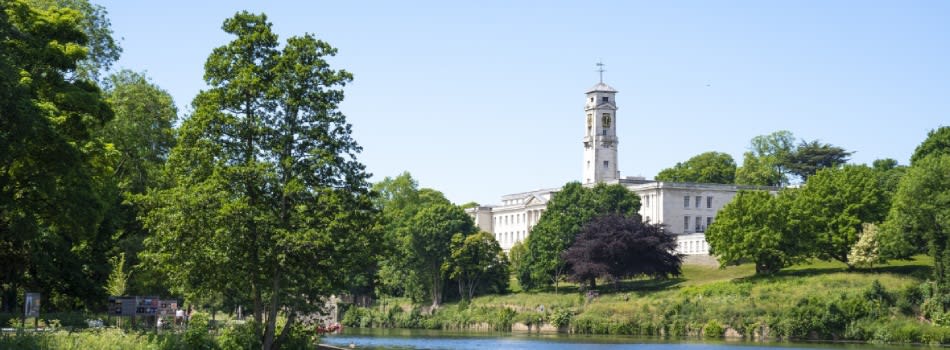Dr Y van Gennip, Dr P Agyakwa
Applications accepted all year round
Funded PhD Project (European/UK Students Only)
About the Project
In this project we will develop mathematical image processing methods for the analysis of 4D (3d+time) X-ray microtomography data of wire bonds [1].
Wire bonds are an essential but life-limiting component of most power electronic modules, which are critical for energy conversion in applications like renewable energy generation and transport.
The key issue we will examine is how we can use mathematical image processing and image analysis techniques to study how defects in wire bonds arise and evolve under operating conditions; this will facilitate more accurate lifetime prediction.
Further details about the project are provided near the end of this document. This project will be based at the University of Nottingham at the School of
Mathematical Sciences. Dr Yves van Gennip is part of the Algebra and Analysis research group and has a special interest in applied analysis.
Since partial differential equations and variational methods form the basis of most of the image processing methods we will need, familiarity with one or both of these is a great advantage, as is knowledge of scientific computing. While prior experience with some or all of these fields is beneficial, a willingness to learn and engage with them is a necessity.
The X-ray microtomography data we will work on, is provided by Dr Pearl Agyakwa of the Faculty of Engineering at the University of Nottingham. Dr Christoph Brune (Mathematics, Twente University, NL) is also closely involved and the student will benefit greatly from his expertise in computational image processing and analysis. Hence, the candidate can profit from a highly interdisciplinary and lively work environment.
Further details about the project:
3D X-ray microtomography provides non-destructive observations of defect growth, which allows the same wire bond to be evaluated over its lifetime, affording invaluable new insights into a still insufficiently understood process.
Analysis and full exploitation of the useful information contained within these large datasets is nontrivial and requires advanced mathematical techniques [2,3]. A major challenge is the ability to subsample compressible information without losing informative data features, to improve temporal accuracy.
Our goal is to construct new mathematical imaging and data analysis methods for evaluating 2D and 3D tomography data for the same wire bond specimen at various stages of wear-out during its lifetime, to better understand the degradation mechanism(s). This will include methods for denoising of data, detection and segmentation of the wires and their defects in the tomography images, and image registration to quantify the wire deformations that occur over time.
Funding Notes
We require an enthusiastic graduate with a 1st class degree in Mathematics, preferably of the MMath/MSc level, or an equivalent overseas degree (in exceptional circumstances a degree in other highly mathematical fields, such as Physics or Engineering can be considered; in exceptional circumstances a 2:1 class degree, or equivalent, can be considered).
The stipend, for UK/EU students, is the Research Councils UK standard rate, 2015/16 is £14,057 per year (details of future rates can be found at http://www.rcuk.ac.uk/. The scholarship length will be 3, 3.5, or 4 years, depending on the qualifications and training needs of the successful applicant.
References
[1] Agyakwa et al., “A non-destructive study of crack development during thermal cycling of Al wire bonds using x-ray computed tomography", CIPS 2014, Nuremberg, Germany, 1-5
[2] Brune C., “4D imaging in tomography and optical nanoscopy”, PhD thesis, University of Münster (2010)
[3] van Gennip, Y., Athavale, P., Gilles, J. and Choksi, R., 2015, "A Regularization Approach to Blind Deblurring and Denoising of QR Barcodes”, IEEE Transactions on Image Processing, 24(9), 2864-2873

 Continue with Facebook
Continue with Facebook


